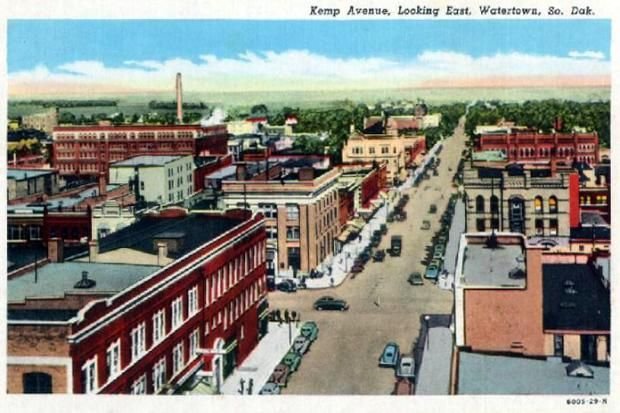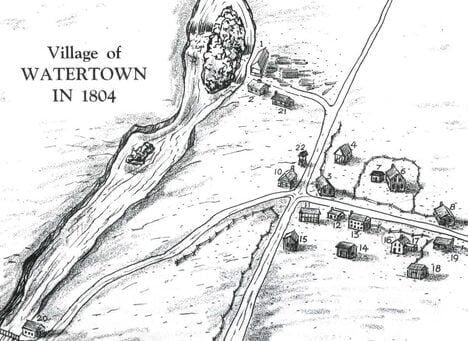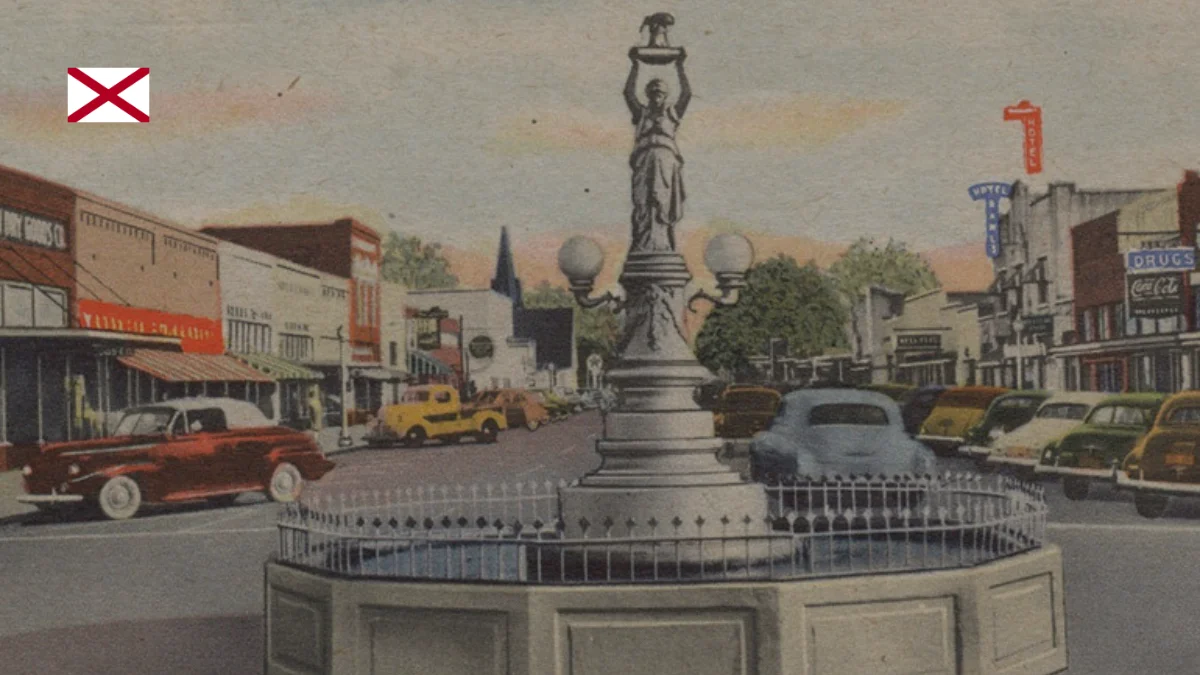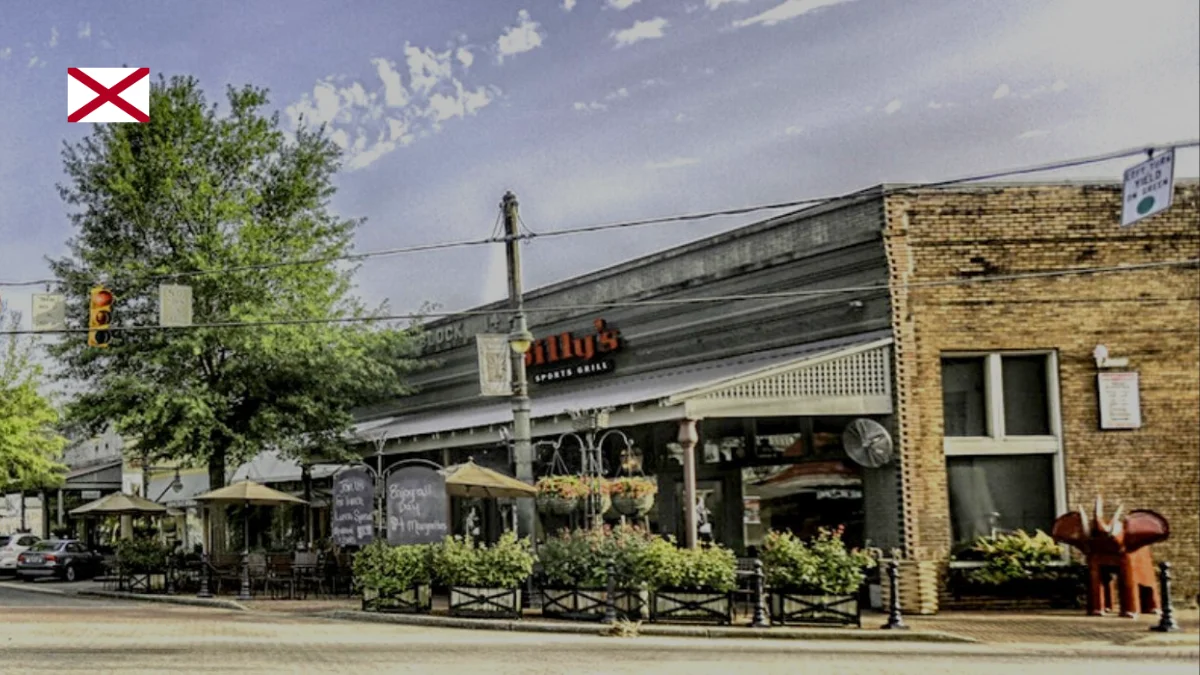Watertown, South Dakota
Watertown is a city in the northeastern United States of South Dakota. It has a population of about 22,000 people and serves as the county seat of Codington County.
The city is known for its scenic beauty and outdoor recreational opportunities, such as fishing, hunting, boating, and camping, and is located along the Big Sioux River. Watertown also has a number of parks, golf courses, and a zoo.
Watertown’s economy is strong, with a diverse mix of industries such as healthcare, manufacturing, retail, and agriculture. Terex Corporation, OSI Group, and the Prairie Lakes Healthcare System are among the city’s major employers.
Watertown is also known for its rich history and cultural heritage, as evidenced by the presence of several museums and historic sites in the area, such as the Redlin Art Center, the Codington County Heritage Museum, and the Goss Opera House.
Geography Of Watertown

Downtown, Watertown SD, Old Postcard
Watertown is located in northeastern South Dakota, about 100 miles north of Sioux Falls. The city is located along the Big Sioux River, which flows through the city’s eastern section. The terrain in and around Watertown is mostly flat, with some rolling hills.
The city covers approximately 26 square miles, of which approximately 25 square miles is land and 1 square mile is water. Codington County’s county seat is Watertown, and the county courthouse is in the downtown area.
Watertown is accessible via several major highways, including I-29, US Route 81, and South Dakota Highway 20. The city is about 140 miles northwest of Sioux City, Iowa, and about 190 miles southeast of Bismarck, North Dakota.
Watertown has a humid continental climate with cold winters and warm summers. In July, the hottest month of the year, the average high temperature is around 84°F, while the average low temperature in January, the coldest month, is around 1°F. Watertown receives approximately 29 inches of precipitation per year, the majority of which falls as snow during the winter months.
Watertown Economy
Watertown has a diverse economy with a mix of industries, including healthcare, manufacturing, retail, and agriculture. The city is home to several major employers, including:
- Terex Corporation, which manufactures cranes and other heavy equipment
- OSI Group, a meat processing and packaging company
- Prairie Lakes Healthcare System, a regional medical centre
- Dakota Bodies, a manufacturer of truck bodies and accessories
- R&J Broadcasting, which operates several radio stations in the area
- Twin City Fan Companies, a manufacturer of industrial fans and blowers
- Benchmark Foam, a manufacturer of expanded polystyrene foam products
- Glacial Lakes Energy, a producer of ethanol and other biofuels
Watertown also has a thriving small business community, with many locally owned shops and restaurants.
The agricultural industry is also important to the local economy, with many farmers in the area growing crops like corn, soybeans, and wheat. The South Dakota Wheat Growers Association, a cooperative with over 5,000 members in the region, is headquartered in the city.
Watertown’s economy is strong and growing overall, with a low unemployment rate and a high standard of living for its residents.
Climate Of Watertown
Watertown has a humid continental climate with cold winters and hot summers. The city is located in an area prone to frequent temperature fluctuations, with sudden temperature changes occurring throughout the year.
Watertown’s average high temperature in the summer is around 84°F, with average lows around 60°F. July and August are the hottest months of the year, with temperatures occasionally reaching the 90s. Watertown’s winter temperatures are typically below freezing, with average highs around 23°F and lows around 1°F. December and January are the coldest months of the year, with temperatures dropping well below zero on occasion.
Watertown receives an average of 29 inches of precipitation per year, which is fairly evenly distributed throughout the year. The majority of the precipitation falls as snow during the winter months, with an annual average of around 48 inches. The spring and summer months are typically wetter, with thunderstorms and heavy rain common.
History Of Watertown

Watertown village map, 1804, South Dakota
Watertown has a long history dating back to the nineteenth century. Several Native American tribes, including the Sioux, lived in the area at one time and used the nearby Big Sioux River for transportation and fishing.
Watertown was founded in 1879 by a group of settlers led by John E. Kemp. The town grew quickly, with many businesses and industries establishing themselves in the area. In 1880, Watertown was designated as the county seat of Codington County, and the first county courthouse was built in 1884.
Watertown experienced a manufacturing boom in the early twentieth century, with several companies establishing operations there. The city became well-known for its heavy equipment manufacturing, which included cranes and mining machinery.
Several military installations, including an air base and a prisoner of war camp, were located in Watertown during WWII. The city also played an important role in the war effort, with many locals employed in defence industries.
Watertown continued to grow and prosper after the war. The city’s economy diversified, with healthcare, retail, and agriculture emerging as key industries. Watertown is now a thriving community with a rich history and a promising future. Many historic buildings and sites in the city, including the Codington County Heritage Museum and the Goss Opera House, have been preserved and are open to the public.
Watertown and nearby Attractions
There are several attractions worth seeing in and around Watertown, including:
- Terry Redlin, a renowned wildlife artist and Watertown native, created the works on display at the Redlin Art Center.
- Bramble Park Zoo has over 500 animals from all over the world, including tigers, bears, and giraffes.
- Codington County Heritage Museum – This museum features exhibits on local industries, agriculture, and culture, as well as the history of Watertown and the surrounding area.
- Goss Opera House – This historic structure houses a theatre, an art gallery, and an event space.
- Pelican Lake Recreation Area – This state park provides camping, hiking, fishing, and other outdoor activities.
- Mellette House – Once the residence of South Dakota’s first governor, Arthur C. Mellette, this historic home is now open to the public as a museum.
- Lake Kampeska is a popular boating, fishing, and swimming destination.
Overall, Watertown and the surrounding area have a wide range of attractions and activities to offer visitors.
Related Articles

Watertown, South Dakota




